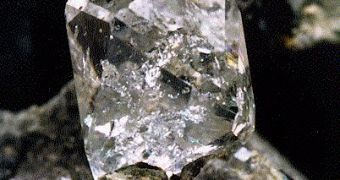Researchers from Carnegie Institution have created a new piezoelectric material that may reduce fabrication costs and deliver high performance pierzoelectrics. Piezoelectrics are materials that have the ability to convert mechanical oscillation into electrical current, and vice versa. On Earth, piezoelectric materials occur naturally in the form of quartz mineral and have applications ranging from medical diagnostics to creating alternative energy production devices.
However, they are relatively expensive to manufacture and provide little energy conversion performance. Ronald Cohen claims to have solved the problem of manufacturing piezoelectric materials, while showing the transition of complex materials, during a study that involved the use of crystals of lead titanate under extreme pressures. Usually, piezoelectrics are being manufactured during a highly expensive process that grows crystals of mixed compositions, substances commonly known as 'solid solutions'.
Researchers used a crystal powder of lead titanate and placed it inside a diamond anvil that was able to generate pressures hundreds of thousands of times those at the center of the Earth. By monitoring the variation in pressure in the crystal with the help of X-ray, researchers were able to construct a mathematical model that calculates the piezoelectric properties of the pure lead titanate crystal under different levels of pressure.
Muhtar Ahart, one of the co-authors of the study, says that the morphotopic phase boundary determines the performance of a piezoelectric material, and represents the limit where the crystal suffers severe change in structure, but experiences a maximum in piezoelectric properties. Most of such substances are produced in highly-complex engineered environments; however, by showing that a pure compound can present a mophotopic phase boundary, the team succeeded in designing a material that brakes the record for the largest piezoelectric response observed in any known compound.
In the last years, the applications of piezoelectric materials expanded exponentially, due to their capability of converting mechanical work directly into electric energy, which makes them ideal for sonar and ultrasound probing. Lately, a team of researchers even proposed a design of an alternative energy generator that produces electric energy, by harvesting vibrations produced by the fall of rain and converting them into electric energy, but for it to become efficient, massive optimization is needed. Cohen says that the new study will provide solutions to improve the development of new and already existing piezoelectric materials, that has proven so valuable in technological applications.

 14 DAY TRIAL //
14 DAY TRIAL //